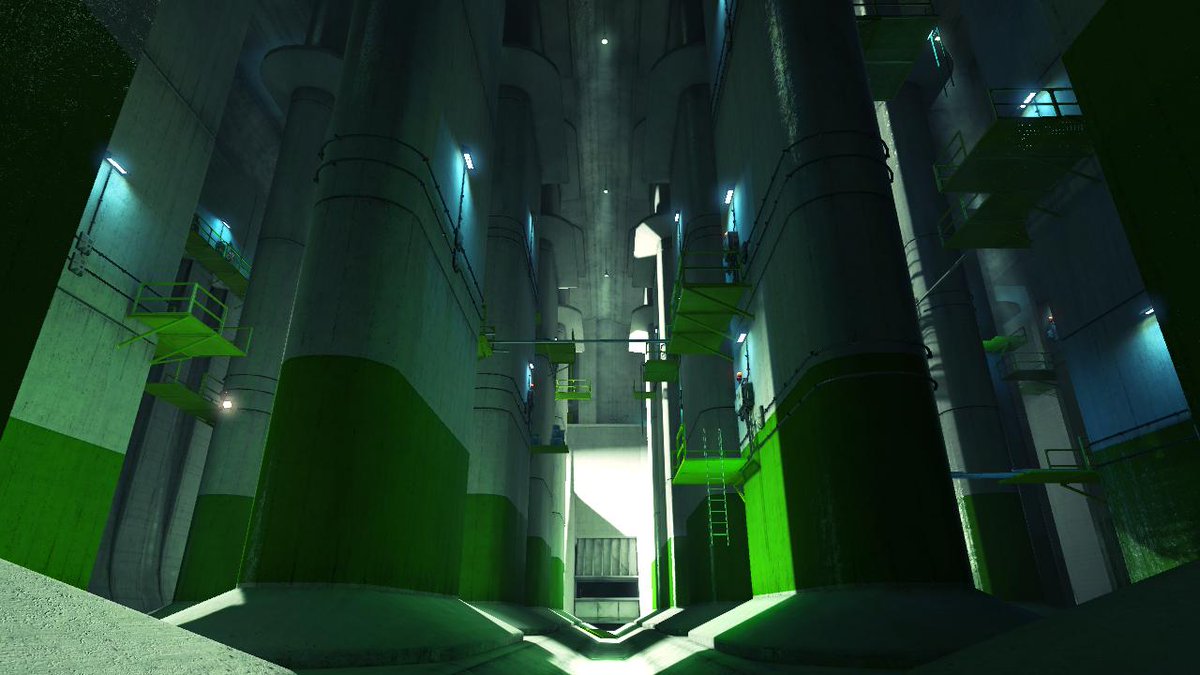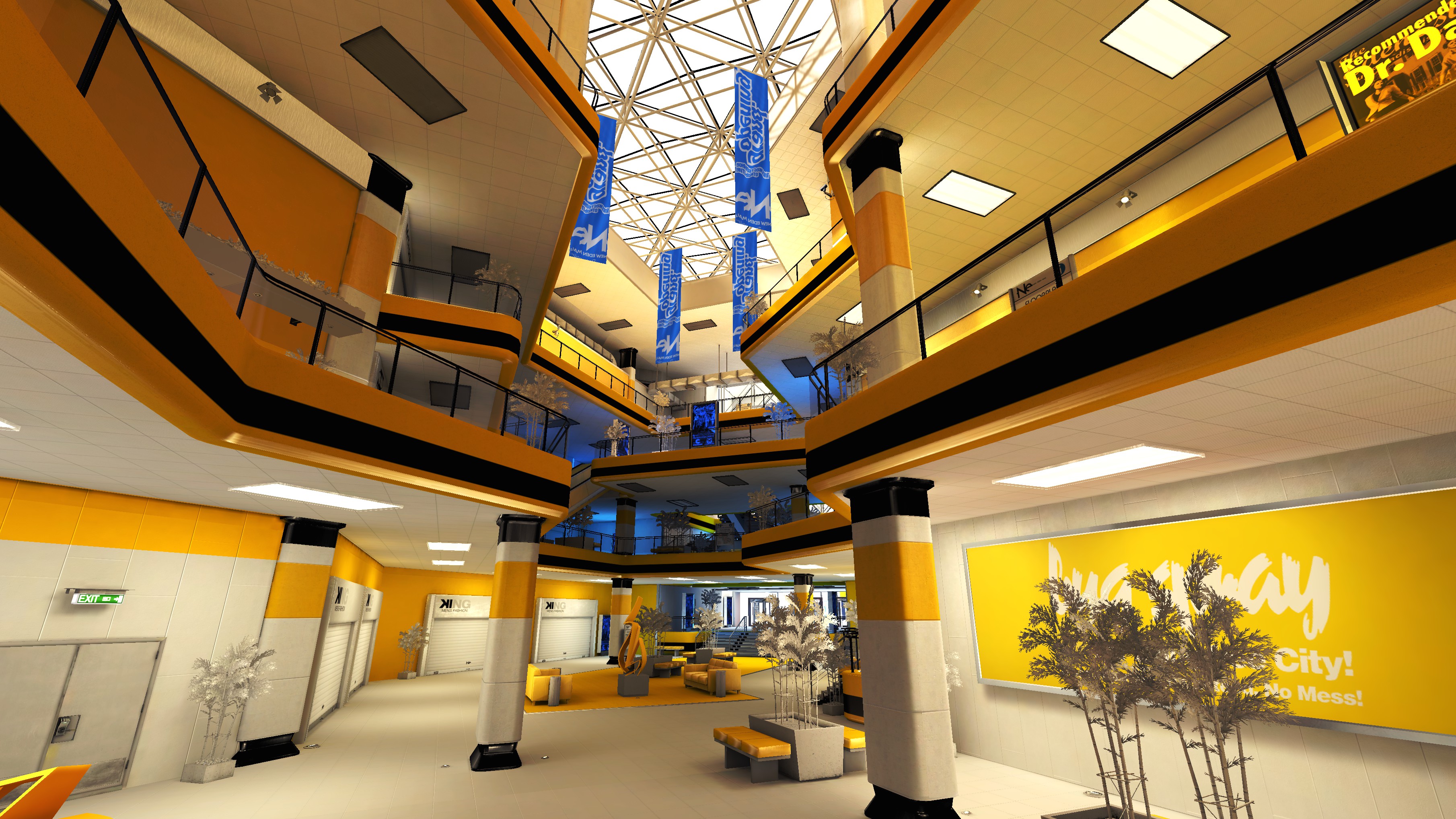Here’s a weird sentence: I could tell you what temperature any of the levels of Mirror’s Edge are. I don’t know how, the game certainly doesn’t provide you with a thermometer. But I just look at this hallway, or this sewer, or this plaza, and I know.
And just as important as those materials is the way they interact with the light. I’m going to get a little technical, and get ready to tear me apart (because I don’t know what I’m talking about): There are a couple ways of lighting a scene in a game.
One of those kinds is “dynamic.” In dynamic lighting, the game is actually calculating, on the fly, how light should be falling across a landscape. That means a game can do a lot of cool things with the lighting, if it so chooses, but it also means that a huge chunk of memory is devoted to figuring out how those lights and shadows are supposed to react with the environment. Games are made for systems with finite resources, and so spending all your lunch money on shadows means you can’t afford those sweet polygons to use elsewhere.
So instead of making everything dynamic, Mirror’s Edge uses almost entirely static, pre-baked lights and shadows. The time of day will never change, no matter how long you stand in the level. Shadows will always be in the same place. And “pre-baked” really is an apt term for it – when we watch a cooking show, we’re not seeing the rushed and potentially sloppy results of whatever they made live – we see the perfect cake they made before the show started, baked and frosted to perfection. Mirror’s Edge knows what times of day its levels take place in, it knows what angles you’ll see them from and where you’ll stand in proportion to them. Mirror’s Edge decorates all its levels beforehand, and pulls them out of the oven at the perfect moment. And goddamn, can this game decorate with lights.

